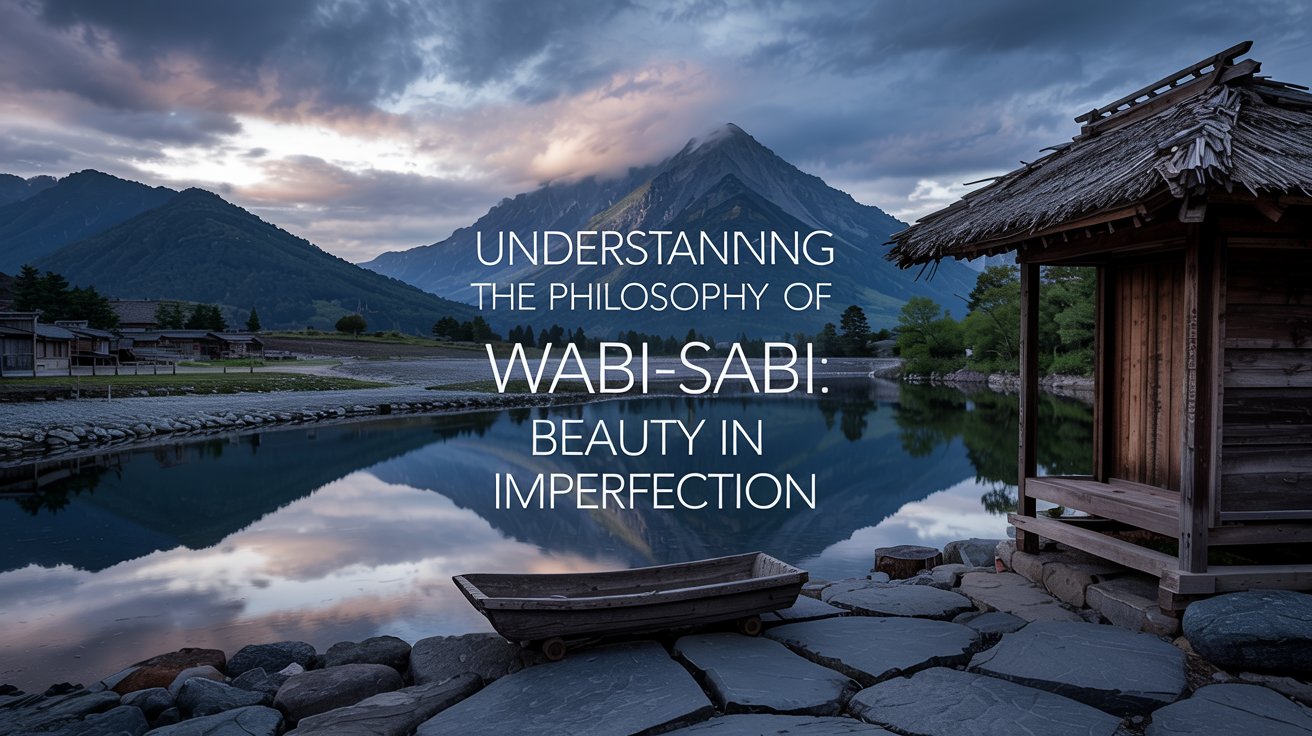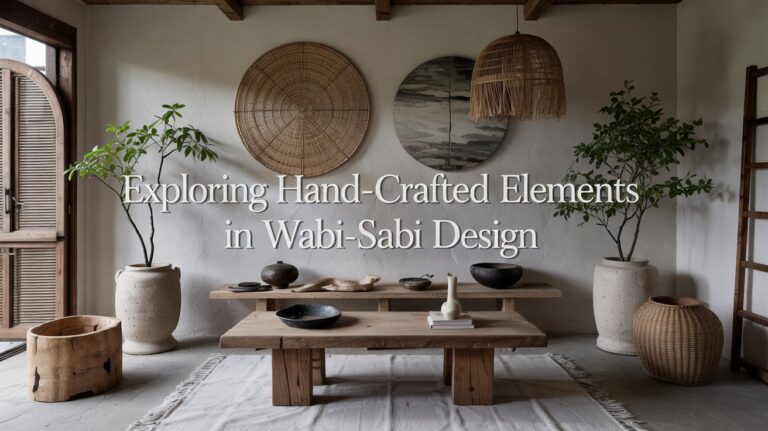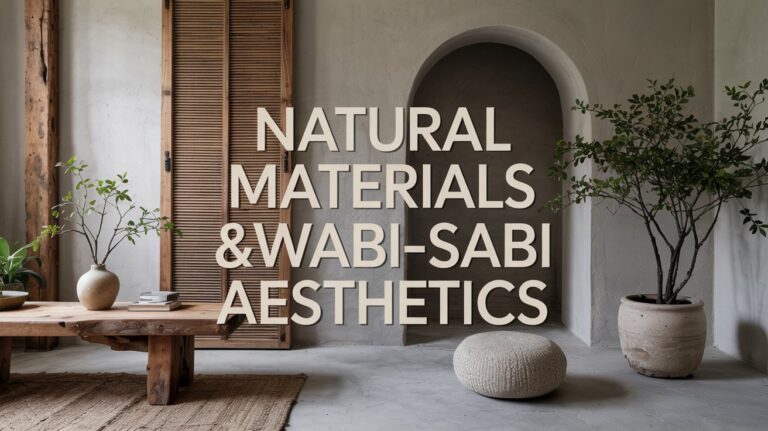Understanding the Philosophy of Wabi Sabi: Beauty in Imperfection
I have been, or can be if you click on a link and make a purchase, compensated via a cash payment, gift, or something else of value for writing this post. As an Amazon Associate, I earn from qualifying purchases. Please read my full Affiliate Disclosure for more information.
Wabi Sabi invites you to notice beauty in imperfection, impermanence, and restraint. You’ll learn to value flaws, aging, and simple textures as carriers of meaning, not defects. Focus on materials that are honest, durable, and modest, where irregularities become intentional dialogue rather than errors. Embrace slow, mindful presence, and let wear reveal a material’s history. This perspective shifts from chasing perfection to appreciating process and growth; if you keep exploring, you’ll uncover deeper implications and practices.
Key Takeaways
- Wabi Sabi finds beauty in impermanence, imperfection, and understated grace, embracing flaws as meaningful qualities.
- It values natural textures, aging, and patina, seeing wear as evidence of use and life.
- The philosophy emphasizes restraint, simplicity, and purposeful choices over ornament or excess.
- It cultivates mindful presence, slow living, and acceptance of change to foster resilience.
- It shifts focus from perfection or external validation to internal growth, purpose, and genuine connection.
The Core Idea of Wabi Sabi
The core idea of wabi sabi centers on recognizing beauty in imperfection, impermanence, and the understated. You examine how flaws, aging, and simplicity convey meaning beyond perfection, inviting a disciplined attention to process and material. This stance rests on philosophical roots that value humility, restraint, and transience, shaping how you assess objects, spaces, and moments. Cultural influences—from ceramic traditions to Zen-influenced aesthetics—shape expectations about value and time. You’re encouraged to read context, question standard measures of worth, and notice how fleeting factors enrich experience. Through careful reflection, you uncover a shared, nuanced ethic: beauty arises in incomplete, evolving reality.

Embracing Impermanence in Everyday Life
You notice how daily life asks you to accept change, guiding you toward embracing transience as a practice. By finding beauty in wear and letting things be, you train your eye to notice value in the imperfect present. This stance forms a practical mindfulness: small, intentional choices that honor impermanence without clinging to novelty or permanence.
Embrace Transience Daily
Even as you settle into the rhythm of daily life, embracing transience invites a sharper awareness of what changes and what endures. You observe cycles shaping habits, spaces, and routines, then distinguish essential constants from passing forms. This practice isn’t resignation but measurement: you assess what matters before it slips away. By noticing nature’s cycle and its punctuated, modest shifts, you develop restraint that heightens focus on true value. The aim isn’t novelty for novelty’s sake, but clarity about impermanence. With disciplined perception, you cultivate steadiness amid flux, appreciating fleeting moments while preserving meaningful continuity.
Find Beauty in Wear
While wear teaches us to notice, beauty reveals itself in how things endure and reveal their history over time. You observe material traces as evidence of use, not failure, and you sense a quiet biography in each mark. Wear becomes a pedagogy, guiding you toward restraint and mindfulness rather than haste. Restorative rituals emerge as practical responses to daily erosion, turning decay into renewal through deliberate care. You recognize artistic imperfections as testament to hands, contexts, and moments that shaped them. In this stance, impermanence disciplines attention, linking utility to meaning and transforming ordinary objects into collected evidence of life’s continuity.
Letting Things Be
How might letting things be reveal a steadier pace of life? You observe impermanence as a natural background, not a problem to fix. By letting go, you reduce the urge to control every outcome and conserve attention for what truly matters. The practice isn’t resignation but choosing where to invest energy, time, and care. In daily life, accepting change softens reactions, clarifies priorities, and invites a calmer rhythm. This stance aligns with wabi sabi’s understated truth: value resides in process, not perfection. Letting go and accepting change become acts of discernment, shaping steadier perception and more deliberate action.
Simplicity and Modesty in Materials
Simplicity and modesty in materials lie at the heart of wabi sabi, where the choice of substance itself conveys restraint and honesty rather than spectacle. You observe how material brings truth through texture and tone, not embellishment. By favoring natural textures and muted tones, you acknowledge impermanence and function over show. The evaluation is precise: durability, tactility, and a quiet footprint guide selection, not novelty. Your approach respects aging as evidence of use. Subtle irregularities become meaning, not flaws. Fundamentally, restraint in materials cultivates focus, inviting contemplation of form, purpose, and harmony without excess or distraction.
Finding Beauty in Flaws and Asymmetry
Flaws and asymmetry, rather than being defects to hide, become the compass by which wabi sabi reveals its nuance: beauty emerges when irregularities are read as evidence of time, use, and natural variation. You’ll notice how rustic charm invites you to see texture, patina, and purposeful rough edges as meaningful signs, not flaws. Asymmetrical balance, then, isn’t disorder but a deliberate tension that enhances depth. You evaluate proportion not by perfection alone, but by how uneven elements converse. In this reading, precision supports interpretation, guiding you toward a calmer, more attentive appreciation of imperfection as intentional, enduring, and alive.
Mindful Presence and Slow Living
In mindful presence, you notice how silence becomes a posture rather than a pause, shaping your attention toward what’s immediate and simple. Slowness serves as an intentional practice, guiding you to savor each moment and align action with awareness. By pairing Silent Presence Practice with Slowness as Intentions, you begin to see how quiet focus can transform daily rhythms into deliberate, meaningful cadence.
Silent Presence Practice
Silent Presence Practice invites you to cultivate a steady, unobtrusive awareness: you notice thoughts and sensations without grabbing hold of them, letting each moment reveal its texture at its own pace. In this approach, you observe patterns and interruptions with calm curiosity, rather than judgment. Mindful silence becomes a lens, highlighting how perception shapes experience without forcing outcomes. Subtle awareness emerges through brief, nonreactive pauses between stimuli, enabling clearer choices. You cultivate steadiness by returning attention to breathing, gesture, or ambient details, evaluating them with precision. This practice links inner poise to outer simplicity, reinforcing mindful presence as a quiet, intentional discipline.
Slowness as Intentions
Slowness isn’t a passive state but a deliberate stance that shapes intention. You approach each moment with measured attention, recognizing that speed often masks deeper values. Slowness becomes a method for refining focus, not retreat. In mindful presence, you cultivate a meditative pause between impulse and action, allowing meaning to surface rather than momentum alone to drive outcomes. Intentional pacing invites you to weigh possibilities, outcomes, and consequences before responding. This practice aligns action with care, reducing waste and reactivity. Slow living, then, is not inertia but a disciplined clarity—an intentional rhythm that reveals what truly matters and supports durable, authentic choices.
Aging, Weathering, and the Passage of Time
Aging and weathering reveal what time cannot erase: the material record of a thing’s use, exposure, and significance, all shaped by gradual change rather than abrupt transformation. You observe how surfaces accrue memory through touch, wear, and environment, converting routine presence into observable history. In Wabi Sabi, time’s fingerprints become meaningful, not ruinous. You notice vintage textures that hint at origin and function, and patina details that register light, pressure, and age. This awareness reframes value: beauty emerges from accumulated experience, not novelty, inviting restraint, humility, and a reverence for process as a form of knowledge.
Cultivating Resilience Through Accepting Imperfection
Coping with imperfection isn’t a surrender so much as a strategy: by embracing flaws, you build resilience that isn’t dependent on flawless outcomes. Cultivating resilience through accepting imperfection means you reframe setbacks as information, not failure, and you adjust without erasing uncertainty. You notice triggers, regulate emotion, and reconnect to purpose rather than perfection. This approach nurtures emotional resilience by turning strain into insight and effort into growth. Self acceptance emerges as a practical discipline: you acknowledge limits, honor progress, and persist with clarity. Through deliberate practice, you cultivate steadiness, adaptability, and a calmer relationship to risk.
Conclusion
You recognize that wabi sabi isn’t a trend but a lens you carry. By embracing impermanence, you slow down, notice, and let materials reveal their honest histories. You see beauty emerge from flaws and asymmetry, not despite them. In daily life, you cultivate presence, simplicity, and resilience, choosing what matters and letting the rest fade. Time isn’t an obstacle but a companion, aging with you as you learn to accept imperfection as a source of steadiness and clarity.






